|
5/30/2019 0 Comments My Notre Dame de Paris
As I wander the aisles of Notre Dame de Paris, I enjoy lingering at the small side chapels. I feel as if I’m visiting an old friend. I am not Catholic, but I appreciate the devotion to the Savior and his mission I see depicted all around me. I also love seeing remembrances of those devoted to Him during their lives—His mother Mary and grandmother Anne, Joan of Arc, St Denis, St Stephen, and the various apostles. I reverence the faith in the resurrection and the triumph over evil that is portrayed in the statues adorning the tombs. I marvel at the intricacy of the chancel screen, surrounding the altar and choir, carved with scenes from the life of Christ. I bask in the soft, but brilliant, colors of the stained glass, as the sun filters through and throws patches of blue and red and gold on the gray stone columns and floor. Although it is dark inside, and candles are burning everywhere, I feel the light of the dedication of artists and monks and heads of state and pilgrims and tourists who have come here for more than nine centuries to create, to worship, to wonder, and to feel peace. This is my fifth trip to Paris, and I’m traveling with a handful of French teachers, soaking up the history and culture of this ancient and vibrant city. In college, I lived here for six months. So I have visited Notre Dame close to ten times, I am sure. I never get tired of the flicker of the candles, the hushed speaking, the feeling of awe, I sense here. In fifth grade, when I first took French, my teacher taught us French songs, helped us learn French vocabulary, and told us stories about France—the monuments and the history. So many of those stories are commemorated inside this lovely place. In junior high, I continued to learn French and I remember choosing to do a report on Notre Dame de Paris. I took four years of French before I moved to Utah—they didn’t have any French classes in junior high, and had only Beginning French in high school. But I continued to love France and French culture. My first in-person visit to Notre Dame was my high school graduation trip, which was university-sponsored and consisted of a month-long European tour. Our bus driver was French, and his twenty-something daughter traveled with us. We became friends, even though I was only seventeen-turning-eighteen, the youngest on the tour. When we arrived in Paris, Bastille Day was the following day, so there were lots of fireworks and crowds and dancing that night. The next day, we watched the Bastille Day Parade in the morning and went through a whirlwind of sightseeing in the afternoon, but I remember being so excited to see all the places I’d only read about and seen in pictures! Notre Dame was one of the places we visited, and I was overwhelmed by the grandeur of the beautiful cathedral. It all seemed so big and so different to a young girl from Utah. At university, I again took French classes, starting at the beginning, since I’d lost most of my earlier language skills. Then I was fortunate to attend a semester abroad in Paris during my sophomore year. We visited Notre Dame often, exploring the side chapels and the artwork, inside and out. We went to Easter Mass. We went on cold days, rainy days, and sunny days. Besides the Louvre, and Luxembourg Gardens, which was across the street from our pension, Notre Dame was the place we visited most in that six months. And yet, I had never read Hugo’s Les Miserables, my mother’s favorite book, and the classic of Paris. I decided to rectify that when I came home, and I loved it, but I didn’t realize my mom’s version was abridged. When I finally read it unabridged, as a young mother, I wept all the way through. We unexpectedly took our young children on an inexpensive trip to Paris shortly after 9/11, and they wondered why we were visiting the sewers. I tried to tell them of Jean Valjean and his story. Years later, when I taught French Culture at a charter high school, I could add authenticity to our study of Les Mis. My little family also spent time at Notre Dame de Paris. My daughter loved the statue of Jeanne d’Arc, someone she admired. My son was impressed by St George slaying the dragon. I took photos of both, wanting my children to remember this day. We all craned our necks to study the rose windows and the magnificent organ. All around us, bright colors reflected on the worn floor and the giant columns. When my children were teens, we returned to Notre Dame one more time. We were on a group European tour, so Paris was just one of many stops. By now, my daughter had studied French, and they had both seen the Les Mis musical, so they understood the significance of sites we were seeing there. Again, they saw St Joan, St George, and the rose windows, but they also realized their importance to French history and culture. One more time, they felt the reverence and value of a sacred place. One of the pictures I snapped was of a mother and her two young children lighting candles in a small chapel, with a bronze Christ on the Cross hanging on the wall, and over a dozen stands filled with twenty or more tiny candles filling the space. It’s a sentimental picture for me, and represents so much of what I feel about my time in the cathedral. A few years ago, at my own private school, we studied The Hunchback of Notre Dame. I think this was when the depth and the importance of this magnificent piece of history we call Notre Dame settled in my bones. Hugo spends so much time describing the cathedral, inside and out, telling stories of its history and cultural significance. It is really a character in the novel, with feelings and personality. His writing helped fund a restoration of the grand Our Lady in his time. Now, I had returned to my beloved Notre Dame with my French teacher friends. We waited in a long line to enter, admiring the lower facade, decorated with saints, angels, kings, and demons, and the delicate carvings of the upper facade and towers. I raised my camera and zoomed in to the tracery and sculpture enclosing the west rose window, another representation of Our Lady. Then I turned southward to capture two gargoyles silhouetted against a blue sky filled with fluffy white clouds. We finally enter the cathedral under the Portal of St Anne, which predates the present cathedral and depicts events surrounding the birth of Christ. Although there are hundreds of people inside, the noise is a hushed murmur. Again, I step to the center of the narthex and take in the view of the long nave, a row of columns lining each side of the aisles, gigantic ribbed pillars marking the points of crossing. Three levels of arches adorn the lofty walls, two open to the aisle and the triforium, the other filled with vaulted stained glass windows in the clerestory. My camera clicks softly as I try to record more memories for when I am home. On this day, I will remember the 14th-century statue of the Virgin and Child at the southeast corner of the crossing, the intricately-carved choir stalls in the apse, and the view of the pieta from behind. My friends St. Joan and St. George greet me as I wander the aisles; the rose windows are brilliantly jeweled by the sunshine outside. Markers memorialize moments in history all around us. Finally, I sit in the chairs in the middle of the nave, soaking up the feeling of this historically sacred place. Notre Dame was originally built on the site of a succession of revered buildings, dating back to Gallo-Roman times: a temple to Jupiter, the cathedral of Childebert I, and several incarnations of the basilica of St. Stephen. In the Crypte Archaeologique, underneath the square in front of the church, there are remains of the Roman town of Lutetia and Paris of the Middle Ages. The current cathedral was begun in 1163 and finished in 1330. Kings were crowned, and funerals held, here. Notre Dame de Paris was damaged and closed during and after the 1793 Revolution. It was restored in the 1800s. The precious glass from the 13th-century North Rose window, along with other historic pieces, was removed during World War II and returned after the war. Our Lady has certainly seen a lot in her 850 years. Eventually, we walk around the sides of Notre Dame, admiring the elegant flying buttresses, the open-mouthed gargoyles, the Baroque spire made of wood and covered in lead, and the copper, life-sized apostles climbing up the ladder towards it. The gardens are green with leafy trees and a few white and purple flowers. I lift my head to admire the towers, soaring above the city roofs. April 15, 2019: I watch my computer screen in horror as my Notre Dame is filled with flames, and the roof and steeple are consumed in fire. I begin to breathe again later that day when there is news that the relics and much of the stained glass and artwork inside has been saved. Now, I only pray that the current restoration will be kind to Our Lady, and I will be able to visit her again once more.
0 Comments
Leave a Reply. |
Archives
May 2019
Topics |
|
©History is the Hook, 2021
|

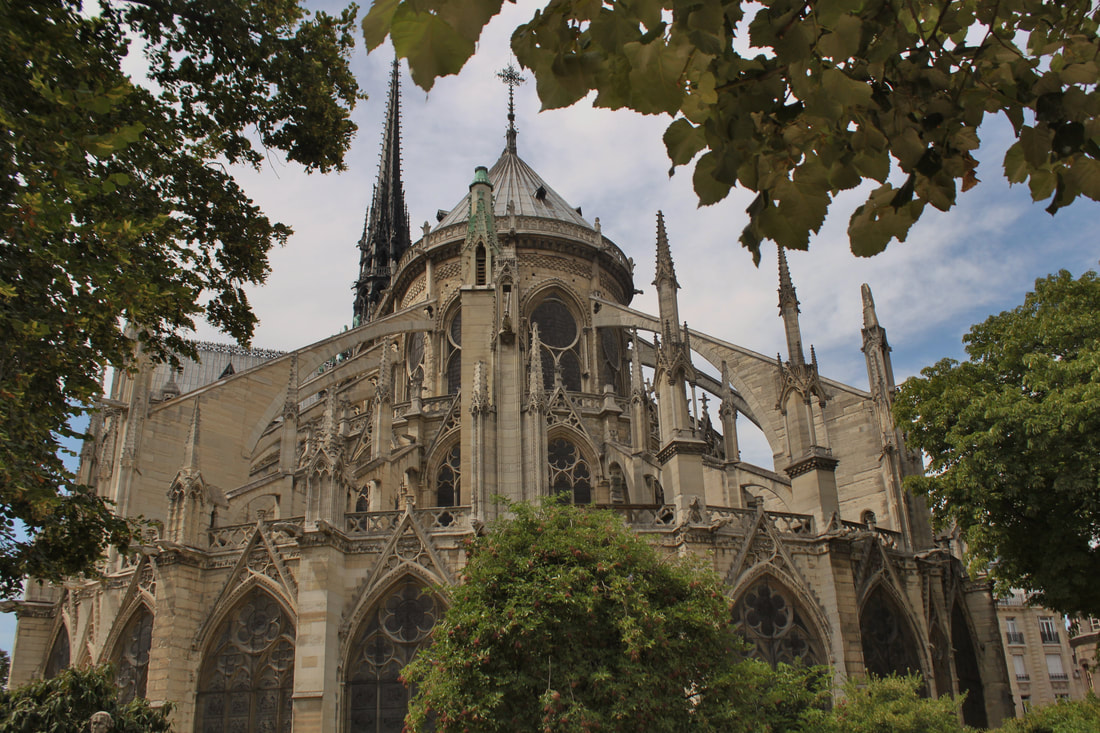
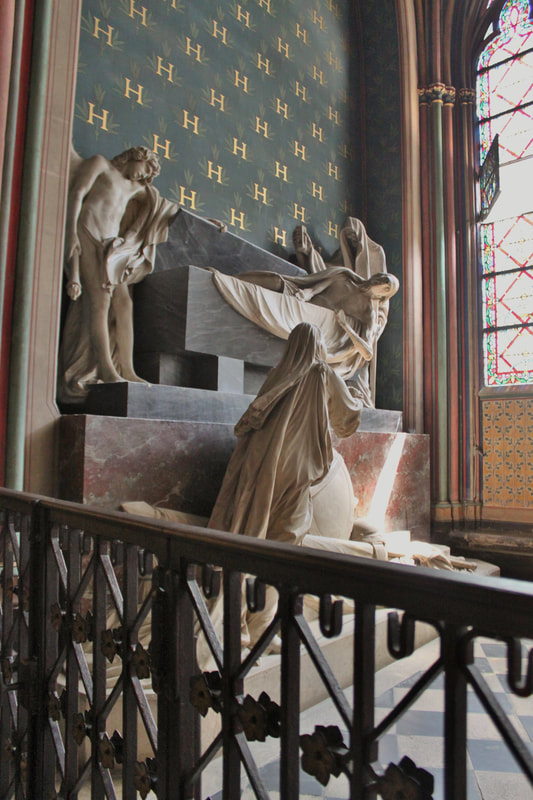
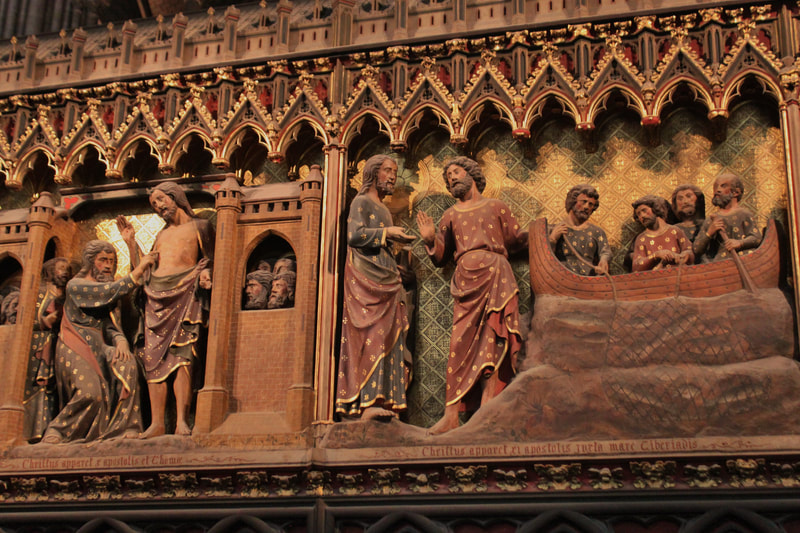
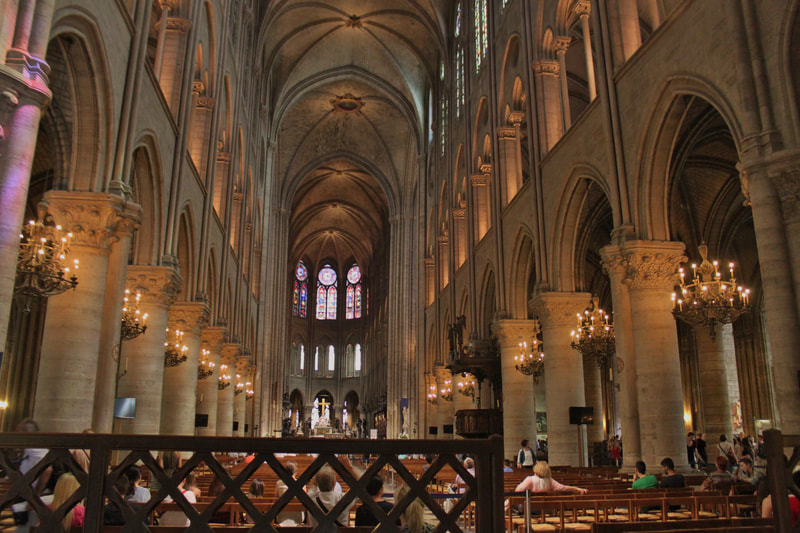
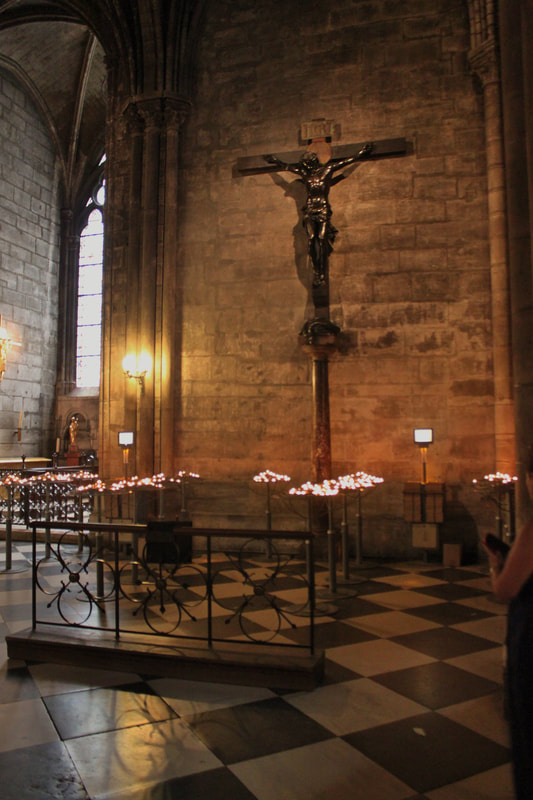
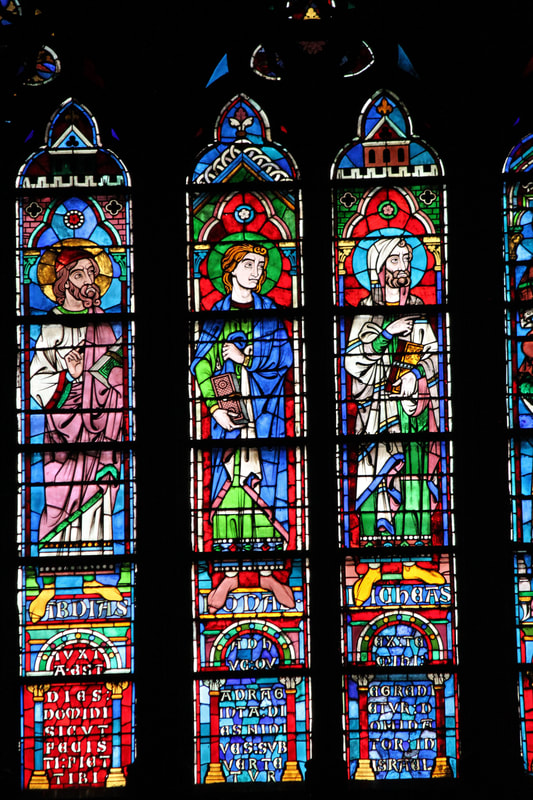
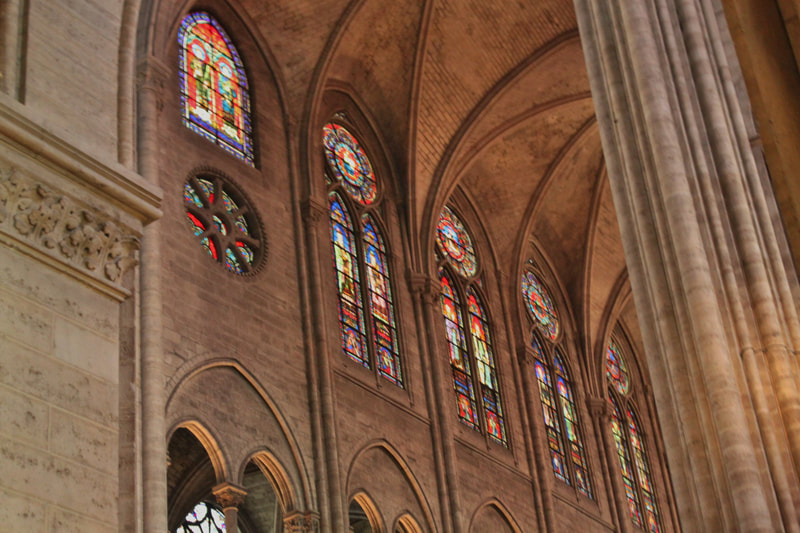
 RSS Feed
RSS Feed